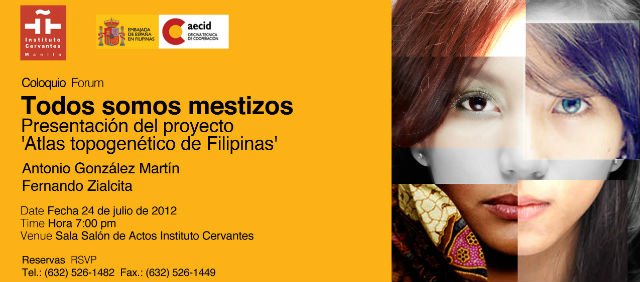Pre-Hispanic Mesoamerican demography approximates the present-day ancestry of Mestizos throughout the territory of Mexico
American Journal of Physical Anthropology
Volume 139 Issue 3
Pages 284 – 294
Published Online: 2009-01-12
Rodrigo Rubi-Castellanos
Instituto de Investigación en Genética Molecular, Centro Universitario de la Ciénega, (CUCiénega-UdeG), Ocotlán, Jalisco, México
Gabriela Martínez-Cortés
Instituto de Investigación en Genética Molecular, Centro Universitario de la Ciénega, (CUCiénega-UdeG), Ocotlán, Jalisco, México
José Francisco Muñoz-Valle
Instituto de Investigación en Reumatología y del Sistema Músculo-Esquelético, Centro Universitario de Ciencias de la Salud (CUCS-UdeG), Guadalajara, Jalisco, México
Antonio González-Martín
Departamento de Zoología y Antropología Física, Universidad Complutense de Madrid (UCM), 28040 Madrid, Spain
Ricardo M. Cerda-Flores
Departamento de Genética de Poblaciones y Bioinformática, Centro de Investigación Biomédica del Noreste (CIBN-IMSS), Monterrey, Nuevo León, México
Manuel Anaya-Palafox
Laboratorio de Genética Forense, Instituto Jalisciense de Ciencias Forenses (IJCF), Tlaquepaque, Jalisco, México
Héctor Rangel-Villalobos
Instituto de Investigación en Genética Molecular, Centro Universitario de la Ciénega, (CUCiénega-UdeG), Ocotlán, Jalisco, México
Rodrigo Rubi-Castellanos and Héctor Rangel-Villalobos contributed equally to this work.
Over the last 500 years, admixture among Amerindians, Europeans, and Africans, principally, has come to shape the present-day gene pool of Mexicans, particularly Mestizos, who represent about 93% of the total Mexican population. In this work, we analyze the genetic data of 13 combined DNA index system-short tandem repeats (CODIS-STRs) in 1,984 unrelated Mestizos representing 10 population samples from different regions of Mexico, namely North, West, Central, and Southeast. The analysis of molecular variance (AMOVA) test demonstrated low but significant differentiation among Mestizos from different regions (FST = 0.34%; P = 0.0000). Although the spatial analysis of molecular variance (SAMOVA) predicted clustering Mestizo populations into four well-delimited groups, the main differentiation was observed between Northwest when compared with Central and Southeast regions. In addition, we included analysis of individuals of Amerindian (Purepechas), European (Huelva, Spain), and African (Fang) origin. Thus, STRUCTURE analysis was performed identifying three well-differentiated ancestral populations (k = 3). STRUCTURE results and admixture estimations by means of LEADMIX software in Mestizo populations demonstrated genetic heterogeneity or asymmetric admixture throughout Mexico, displaying an increasing North-to-South gradient of Amerindian ancestry, and vice versa regarding the European component. Interestingly, this distribution of Amerindian ancestry roughly reflects pre-Hispanic Native-population density, particularly toward the Mesoamerican area. The forensic, epidemiological, and evolutionary implications of these findings are discussed herein.
